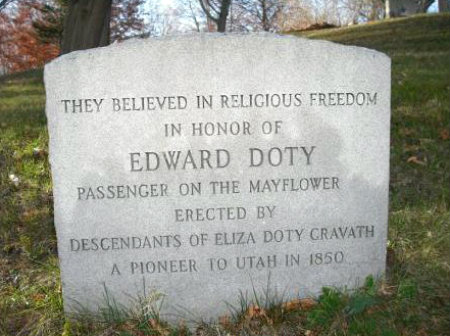
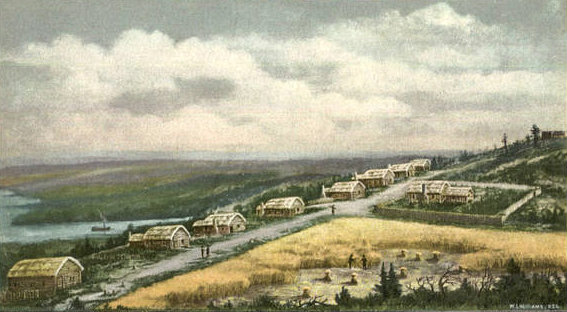
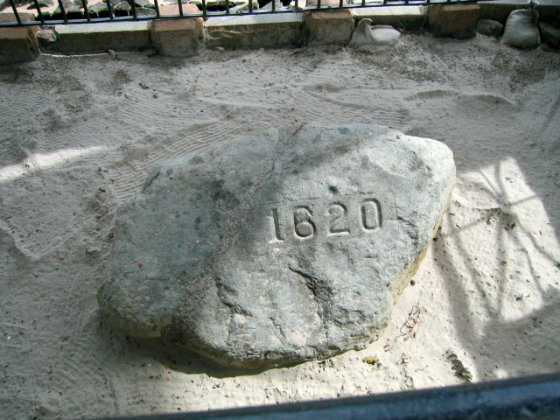
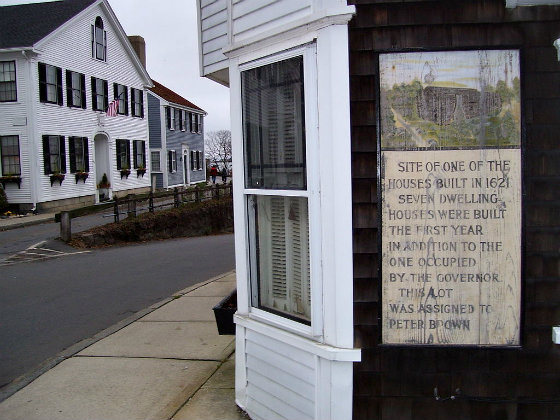
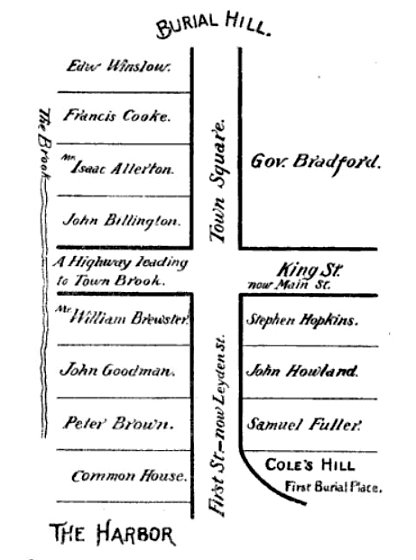
| ~ Pilgrims and Strangers ~ ~ Old Plymouth ~ ~ Edward Doty ~ |

| Views of old Plymouth, pictures of objects owned by Mayflower passengers and the memorial to my 8-g-grandfather, Edward Doty. |
| This memorial to my ancestor, Edward Doty, located on Plymouth's Burial Hill, is somewhat misleading, because reading it may give the impression that Edward Doty was a Pilgrim. He was, indeed, on The Mayflower, however, there were as many "Adventurers" or "Strangers," as the Pilgrims called them, on The Mayflower as there were "Saints" (as the Pilgrims called themselves). The London Company in England and the Adventurers who sailed to the New World considered the expedition to be a financial investment for the former and the beginning of a new life of independence and hopeful prosperity for the latter. The stone's inference notwithstanding, Edward Doty didn't travel to New England as a Pilgrim in search of religious freedom, he was a servant/apprentice to adventurer Stephen Hopkins. His story is not the story of a "Saint," but it's an amazing story. Edward Doty was one of only half of the Mayflower passengers to survive the first brutal winter in New England. Gov. Bradford describes the ordeal in Of Plymouth Plantation: "But that which was most sadd & lamentable was, that in 2 or 3 moneths time, halfe of their company dyed, espetialy in January & February, being ye depth of winter, and wanting houses & other comforts; being infected with ye scurvie & other diseases, which this long vioage & their inacomodate condition had brought upon them; so as ther dyed some times 2 or 3 of a day, in ye foresaid time; that of 100 & odd persons, scarce 50 remained. "And of these in ye time of most distres, ther was but 6 or 7 sound persons, who, to their great comendations be it spoken, spared no pains, night nor day, but with abundance of toyle and hazard of their owne health, fetched them woode, made them fires, drest them meat, made their beds, washed their lothsome cloaths, cloathed & uncloathed them; in a word, did all ye homly & necessarie offices for them wch dainty & quesie stomacks cannot endure to hear named; and all this willingly & cheerfully, without any grudging in ye least, shewing herein their true love unto their friends & bretheren. A rare example & worthy to be remembred." Edward Doty survived and prospered in the New World, leaving many descendants to honor him and celebrate his accomplishments. His name is worthy to be remembered. -- Nancy |
| Plymouth Rock |
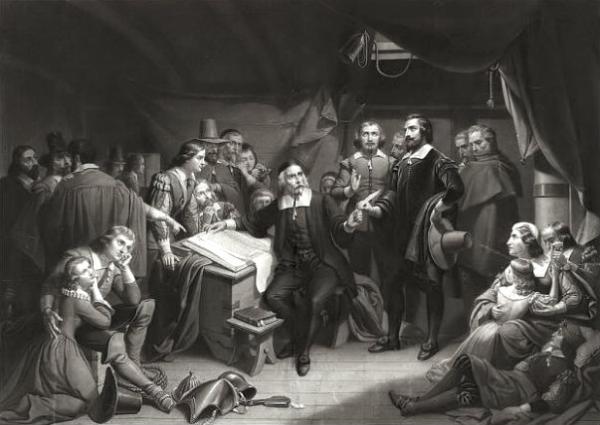
| Signing of the Mayflower Compact |
| A representation of how the first seven homes might have looked at the end of winter in 1621. |
| The colonists were only able to complete a couple of houses during the winter of 1620, because of weather conditions, the sickness among them and, also, fires caused by sparks hitting the thatched roofs. In December, they assigned plots of land to each of the 19 families; the plots were 50 feet deep and the width was 8 feet times the number of people in the household. Most people continuted to live aboard the Mayflower that winter. The next year, December, 1621, found 7 family houses finished, as well as, 4 common houses. The Fortune (1621) and the Anne (1623) brought more colonists and, by 1624, there were 32 houses in Plymouth. |
| Above, Plymouth houses in the year 1622. |
| A sign marks the spot where one of the original seven houses stood. |
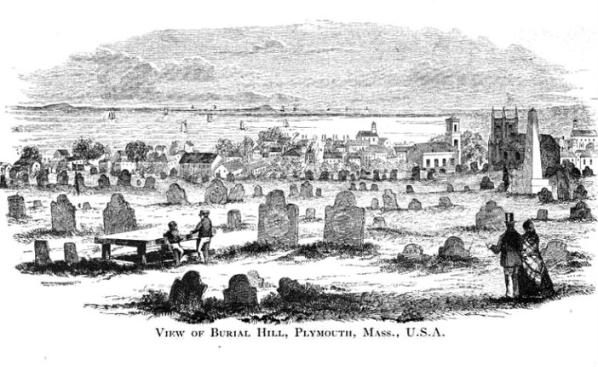
| Burial Hill, 1892 |
| The Plymouth scenes below were taken in the late 1800's. |
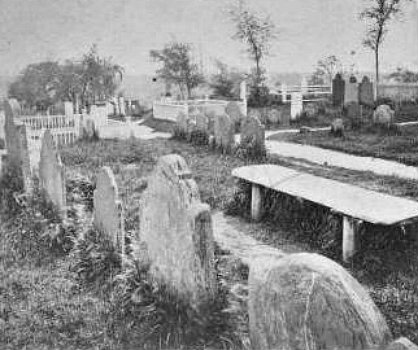
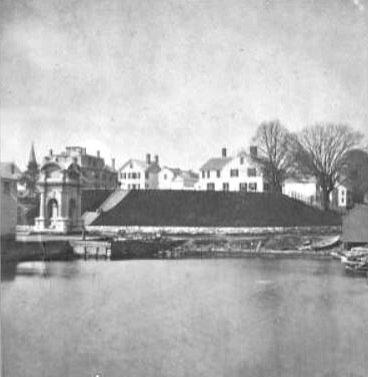
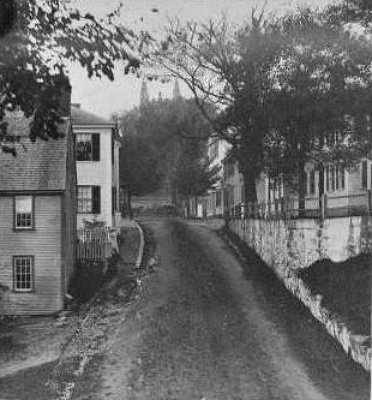
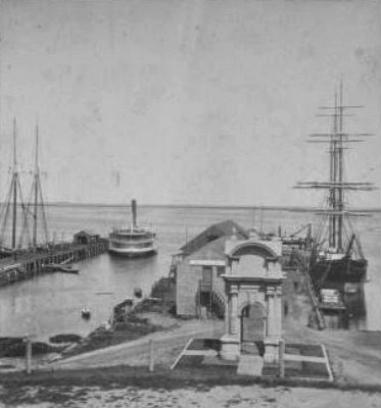
| Two views of the old Plymouth Rock monument. This structure was demolished in 1920 and a new monument erected. Cole's Hill can be seen above. |
| The first street in Plymouth was appropriately named First Street (later changed to Leyden Street) - claimed to be the oldest continuously inhabited street in the thirteen colonies. It has been used since the original settlers built houses here in 1620. |
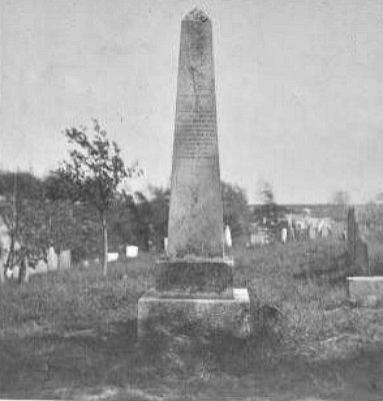
| Left and above, Burial Hill, Plymouth; left, monument to Governor William Bradford. |
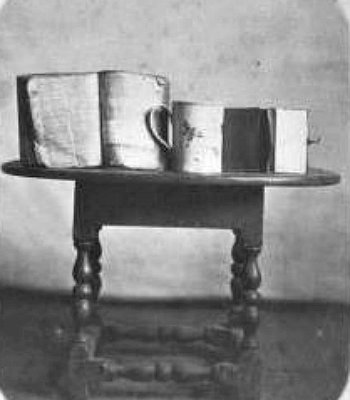
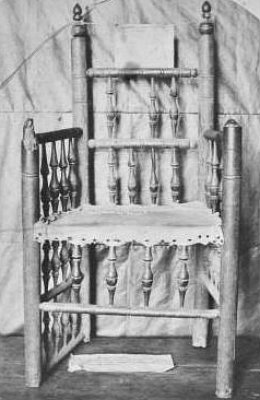
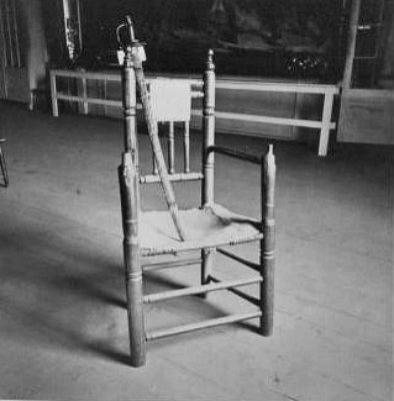
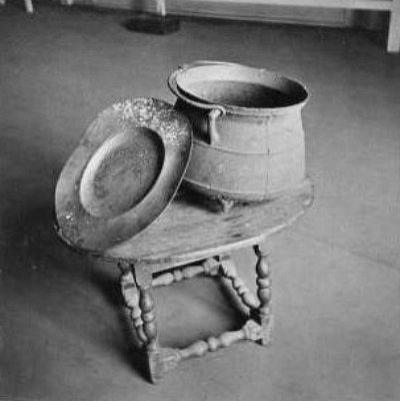
| John Carver chair ~ Myles Standish sword |
| William Brewster chair |
| Objects Owned by Mayflower Passengers |
| Myles Standish platter and pot |
| Thomas Clark mug and wallet and a Mayflower Bible |
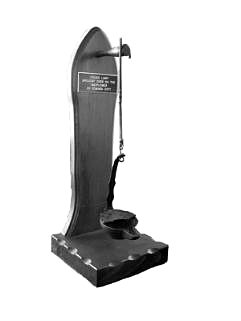
| Edward Doty lamp |
| Photo Credits: Peter Brown site: Swampyank@Wikimedia.Commons, Map of lots: Swampyank@Wikimedia.Commons, Views of Plymouth: NYPL@Wikimedia |
